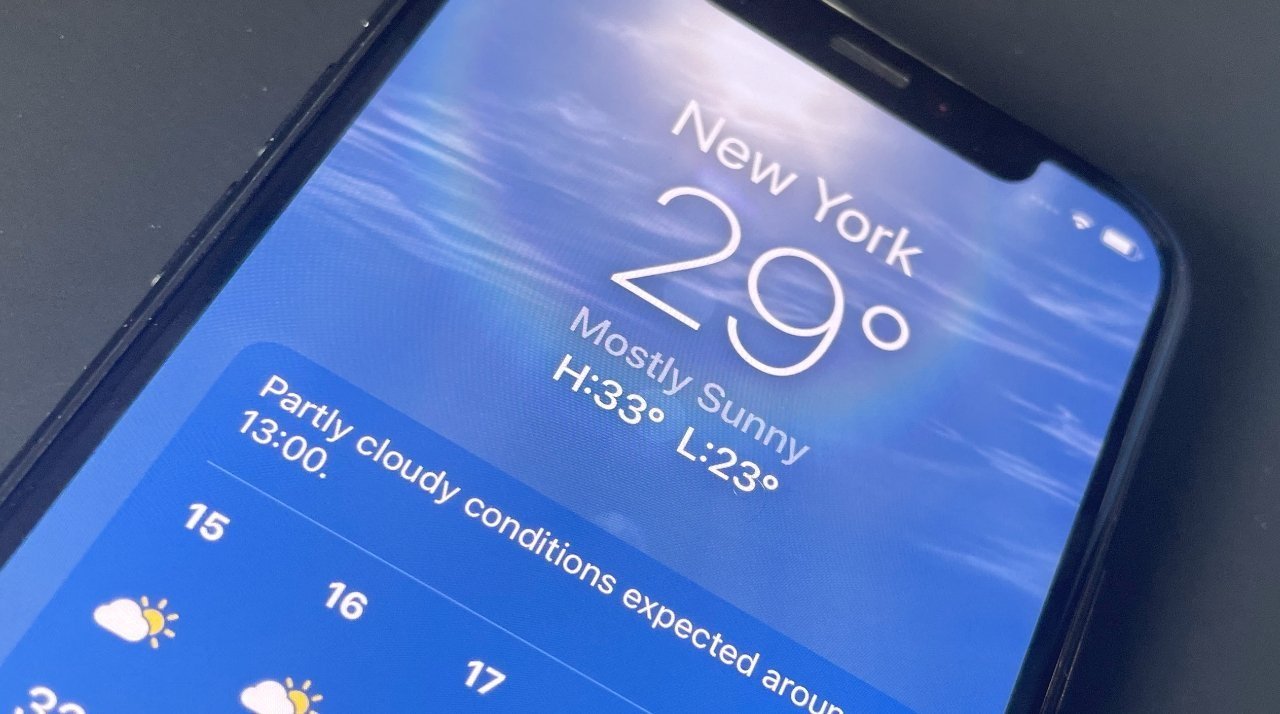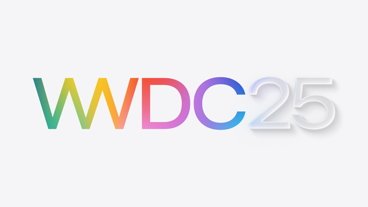Apple Weather for iOS has come under fire again for a record-breaking temperature prediction that the service maintained for a few hours that seemed unlikely. Here's where the data comes from.
Many iPhone users depend on Apple's Weather app on the iPhone to determine the weather for the day or week ahead. However, while it is highly used and reasonably accurate most of the time, it can sometimes offer questionable forecasts.
The most recent example is from Fresno, California. On Thursday, GVWire reports the Weather app's predictions on Thursday said there would be highs of 121 degrees for July 6 at one point, far above the 115-degree record high set in 1905.
This is in contrast to predictions from the National Weather Service in Hanford, which says the peak should be between 108 and 111 degrees. Later in the afternoon, Apple's forecast updated to a more reasonable 112 degrees for that date.
Meanwhile, the Sacramento Bee says that Thursday morning's predictions for the following week also included hotter than expected temperatures, from 105 degrees on Monday to 110 on Wednesday. For July 6, Sacramento allegedly faced a high of 119 degrees, according to Apple Weather.
While generally accurate enough for most users, the Weather app frequently gets hit by complaints about its predictions. Posts on Apple's support forums have discussed how the app often offers results that differ greatly from other forecasts.
A sourcing issue
It is unknown exactly what caused the unusually high temperature predictions, but it is likely to be a problem associated with Apple's data sources.
Apple's list of data sources on its support pages, shows it uses a number of well-known outlets for its weather data. The sources covering the United States include the National Weather Service/NOAA, The Weather Channel, and BreezoMeter.
While it doesn't collect its own data, instead relying on outside sources, it still does its own processing. Apple gave the Weather app a boost following its acquisition of Dark Sky in 2020, which led to more hyper-local weather prediction features being introduced.
Any in-house algorithms can only be as accurate as the data feeding into it. While it's possible that the sources themselves made a minor mistake, it's doubtful.
The more likely explanation is that the data was corrupted or changed when it was sent to Apple, and it wasn't accounted for, nor was there any sensibility check applied. With the forecast changing within hours, this seems to be a plausible reason for the "correction."
We shouldn't have to say this. Weather forecasting isn't an exact science. AppleInsider recommends that users rely on tools like Apple Weather and any other weather service or application ever made to be a general guide to the day ahead, at least when it comes to forecasts.
Weather predictions are always educated guesses. The further they go into the future, the greater the chance of inaccuracy.
If you are concerned about the results from the Weather app, you can find many other meteorological apps in the App Store.
 Malcolm Owen
Malcolm Owen







-m.jpg)






 Andrew Orr
Andrew Orr
 Wesley Hilliard
Wesley Hilliard

 Oliver Haslam
Oliver Haslam
 Christine McKee
Christine McKee
 Amber Neely
Amber Neely









15 Comments
The differences we see around weather predictions have always existed. These differences are attributable to their source and the prediction and probabilistic models behind them. Live data feedback is also part of the models, but even the live data isn’t a controllable feedback loop like it would be in a tunable control loop because the feedback is also extremely variable. Adapting the predictions more often or in real time based on live data, including radar, local weather data collection, visual sightings can help narrow the cone of uncertainty considerably for much smaller prediction time windows. If you’ve experienced a tornado you’ll see the predictions being updated in real time with live feedback and observations because every minute or even seconds matters.
The next time you see a serious tropical storm approaching landfall you’ll see not only the storm path predictions coming from different modeling sources, but also the cones of uncertainty associated with each path prediction. In the end however all of the predictions can be totally whacked because the actual behavior of the storm did not follow any of the predictions.That’s the nature of uncertainty.
Choosing an app for weather prediction should be based on your needs. If you just need to know whether to bring a jacket, umbrella, emergency hydration, bag of sand and a shovel, or sunscreen along you can test drive a few apps and find one that seems to work for you. A lot of these apps use the same sources. On the other hand, if you need an app that can help you deal with an evolving weather emergency in near real time, you’ll definitely need to narrow your search down considerably. The weather app on Apple’s devices, or the weather skill in Amazon’s Echo devices, are generally good enough for most of my daily needs. But when there’s a severe thunderstorm, tornado, or lake effect snow warning in effect, I always go to a weather app that has radar with a wide range of live data overlays, like wind speed and direction, precipitation rates, doppler color coding, lightning strike markers, etc.
I find Apple's weather widget to be very inaccurate and just annoying. I live in the desert and the app is always 5-11 degrees less than the official published weather here based on the airport and Accuweather. On occasion it will indicate it's raining in my area (a rarity) when in fact it's raining in adjacent towns. The app cannot be relied upon.
I don't use Apple's Weather app, mainly because the non-Canadian data sources increase distrust. Instead, my default is the Weather Network, Canada's main weather channel.
It is interesting to compare forecasts across apps. You can definitely see how some lean one way, and others lean another way.